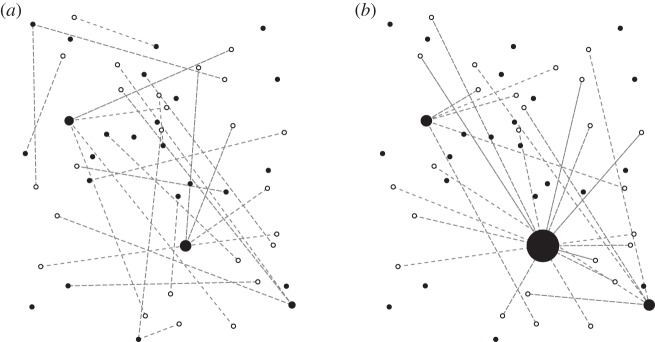Figure 3.

Example sexual contact networks (SCNs) in a biased mating system. Sexual contacts are indicated by dotted lines connecting the serially monogamous sex (empty circles) to the polygamous sex (filled circles). Members of the polygamous sex attract mates based on their relative ‘attractiveness’ (represented here by circle size), which is based on a power-law distribution (equation (3.1)) with (a) α = 1 and (b) α = 2. (a) Lower values of α produce more balanced SCNs, with less variation in the number of partners. (b) Higher values of α cause a few members of the population to dominate the network and leave many members of the polygamous sex without partners.
